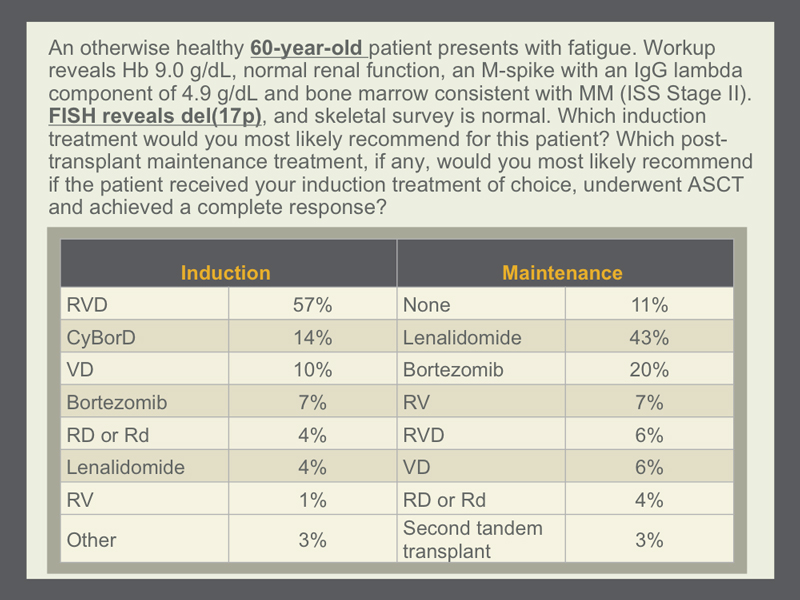Initial treatment for younger, transplant-eligible patients at high riskInitial treatment for younger, transplant-eligible patients at high risk
Editor's comments
We asked about patients with high-risk cytogenetics, specifically 17p deletion, and found induction treatment similar to those for patients at standard risk, the most common regimen being RVD, also used by both faculty. However, the approach to post-transplant maintenance is different, as 39% of oncologists and both faculty incorporate bortezomib, a practice that increased quickly after presentations of the HOVON-65 study, which used bortezomib-based induction and maintenance. Dr Munshi administers RVD maintenance, an approach described in a recent publication by Dr Sagar Lonial in Leukemia, and Dr Vij opts for lenalidomide and bortezomib without dexamethasone. |

